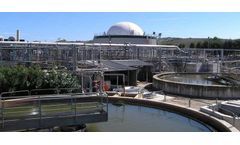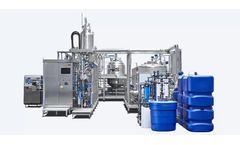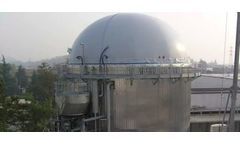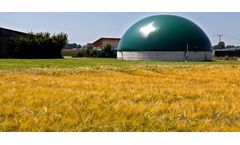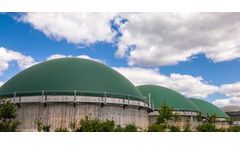Refine by
Anaerobic Digestion Articles & Analysis
315 articles found
The first few months of 2025 have been among the most economically turbulent in recent history, but despite this there are still signs anaerobic digestion (AD) will continue to play a key role in boosting energy security, tackling climate change, and managing organic wastes. ...
Anaerobic digestion can transform what was once considered a liability into a reliable energy source The imperative for sustainable practices in industrial operations has never been greater. ...
Critical considerations for anaerobic digestion projects In the field of industrial wastewater treatment, anaerobic digestion is a powerful process that transforms waste into valuable by-products. ...
Wastewater treatment plants, food waste facilities, and landfill gas recovery systems utilise anaerobic digesters to break down organic matter. This digestion process produces biogas—a mixture of methane and carbon dioxide. ...
Peaks Renewables, in collaboration with Maine’s dairy industry, is developing renewable natural gas (RNG) locally at their anaerobic digestion ...
Integrated Bioenergy Systems Combining biomass pyrolysis with other bioenergy technologies, such as anaerobic digestion and gasification, creates integrated bioenergy systems that maximize resource utilization and energy recovery. ...
Biochemical conversion technology Anaerobic digestion (AD) and the fermentation are two main methods of biochemical conversion technology. ...
As the world increasingly turns to renewable energy sources to combat climate change and reduce dependency on fossil fuels, the role of precise gas analysis becomes ever more critical. Gas analysis is vital not only in the production and storage of renewable energies but also in ensuring their efficiency and environmental compliance. In this blog, we delve into the essential aspects of gas ...
Engineers consider a range of factors — including the waste to be treated and the desired outcome — when designing an AD system Anaerobic digestion (AD) is a well-established technology for the treatment of organic waste streams. ...
Most of the demand for complete systems comes from the food and drink industry, but we are also seeing a strong interest in systems for wastewater treatment, as well as specialist applications such as anaerobic digestion and zero liquid discharge. Bespoke System Design Unlike other heat exchanger manufacturers who only sell standard heat exchanger designs, each ...
EFC reactors bring many advantages for treating high COD wastewater The external forced circulation (EFC) reactor is a type of anaerobic digester developed by Fluence that is particularly suited for the treatment of high soluble COD wastewater streams like those of: Paper and pulp manufacturing Livestock operations and slaughterhouses Meat and seafood ...
Anaerobic digester genset in food industry. 1 stage of 198C/12 Bar steam generation, left hand side. 2 stages of water heating delivered by 2 standard modules, visible on right of unit. ...
The annual processing capacity of the plant is approximately 130,000 tons of agricultural biomass, including corn and straw. The biogas generated will be used as a substitute for natural gas for transportation and injected into the natural gas pipeline network. ...
The transition to sustainable energy is a critical global goal, and biogas and syngas are emerging as significant contributors to this shift. Cambridge Sensotec’s advanced gas analysis technologies are playing a pivotal role in ensuring the efficient and effective use of these renewable energy ...
In the modern industrial production process, especially in the fields of chemical industry, petroleum and energy, the generation and application of synthesis gas (“syngas” for short) occupies an indispensable position. Synthesis gas is a mixed gas composed of carbon monoxide, hydrogen and other gas components. It is widely used in many fields such as chemical raw materials, energy ...
Methane is a potent greenhouse gas but it’s also highly combustible, making it a valuable source of renewable energy when captured. Anaerobic digesters can convert farm waste into methane-rich biogas, leaving the solid and liquid residues to be used as a nutrient-rich fertilizer. By recovering nutrients for reuse, anaerobic ...
The benefits can be compelling, but several factors must be considered Anaerobic digestion is a biological process that breaks down organic matter in the absence of oxygen, producing biogas and nutrient-rich sludge. Used in wastewater treatment, anaerobic digestion helps reduce the volume of sludge, stabilizes the solids, and ...
Legislation has potential to boost biogas use across the US When anaerobic digestion is used to process wastewater with a high organic load, it produces energy in the form of biogas, a combination of methane, carbon dioxide, and other gases. In the United States, there is huge potential for expansion in anaerobic digestion, but ...
However, establishing an on-farm anaerobic digestion plant that generates biogas from cattle slurry offers several benefits: It captures methane and converts it into a renewable source of energy that can be used to replace fossil fuels used for heating or as a source of electricity. ...
Anaerobic digestion can turn waste into a valuable resource Billions of tons of organic waste are generated every day by households, industries, and municipalities. ...


